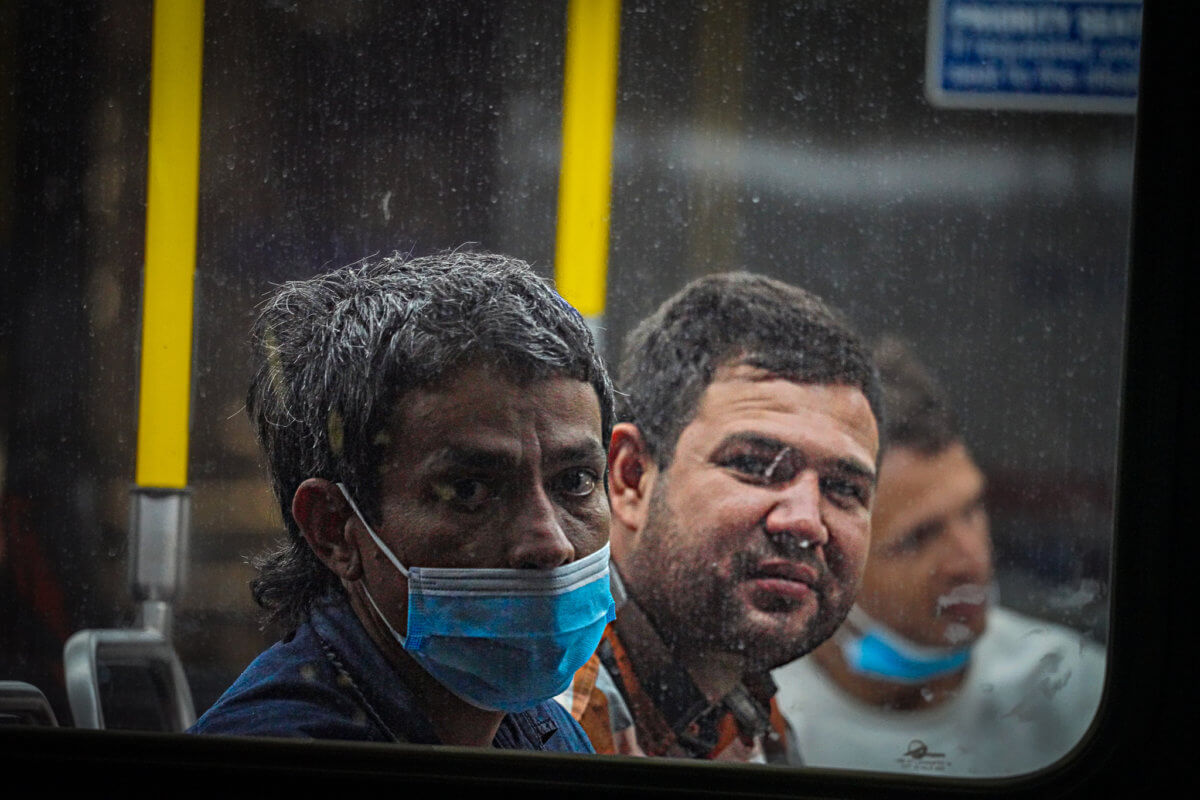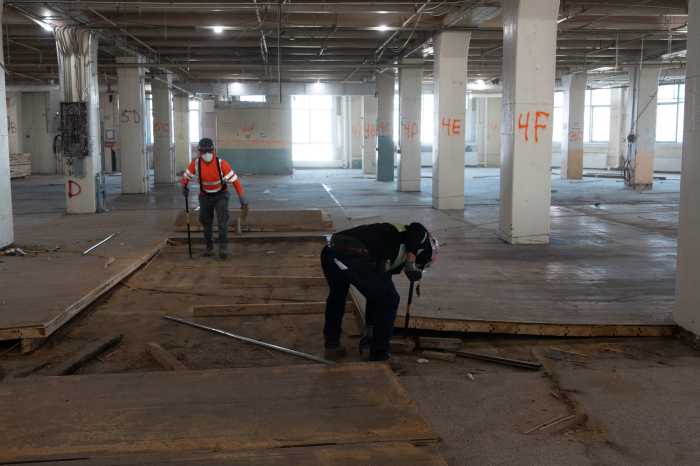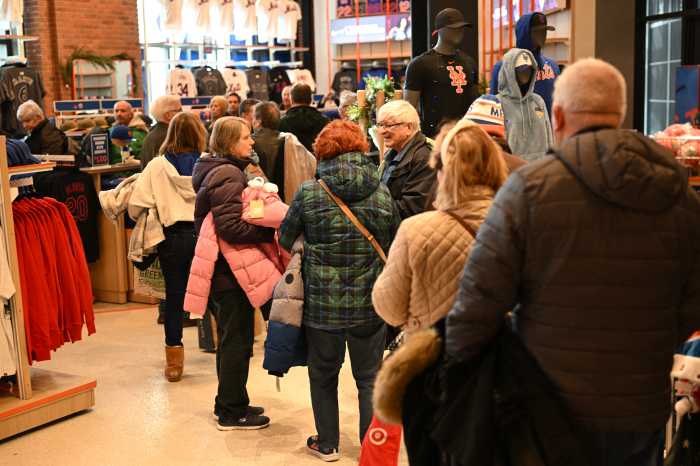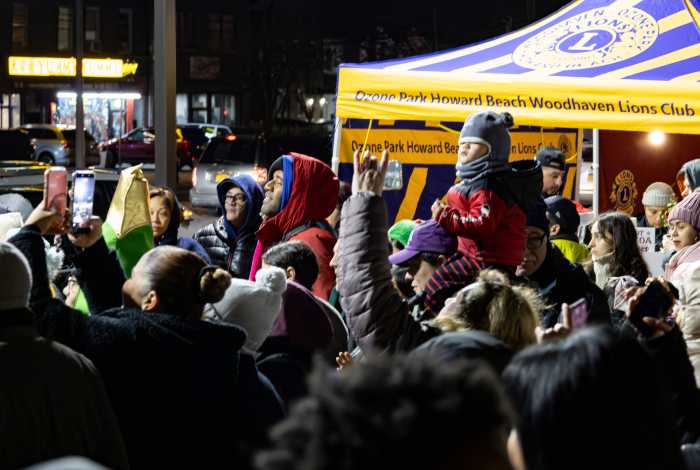A representative from NYC Health + Hospitals delivered a presentation on the city’s asylum seeker response to members of the Queens Borough Board Monday, March 6. The main point of discussion was centered on how the Humanitarian Emergency Response and Relief Center (HERRC) in Queens has been helping these asylum seekers adjust to such a major transition.
According to NYC Health + Hospitals Director of External Affairs Laura Atlas, there are approximately 350 to 400 asylum seekers currently living at the Wingate by Wyndham Hotel in Long Island City, which has been serving as a HERRC by providing around 150 rooms for these migrants. Atlas stated that the first priorities for arriving migrants is to help provide them with ways to reconnect with family members or friends, whether they live in the United States or elsewhere, as well as to provide immediate medical care.
“People have been through extremely grueling journeys to get here,” Atlas said. “Oftentimes they have been completely disconnected from healthcare for months, if not longer. There are children arriving who have never received basic child medical care. There are expectant mothers arriving who also require a lot of medical attention.”

For NYC Health + Hospitals, HERRCs act as social service sites. At the Wingate site, one family of asylum seekers is assigned per room, with the size of the room meant to match the amount of people in the household. In order to be eligible to reside at these sites, the families must have a child under the age of 18 or include an expecting mother.
Upon the arrival of the asylum seekers to these sites, an intake is performed on them to find out if they have any allergies or specific dietary needs so that they may be accommodated. Additionally, they are screened for depression, as many have recently gone through very stressful experiences and may need assistance for their mental health.
Like the other six HERRCs in New York City, the one located in Queens has a 24/7 clinical access. This allows for asylum seekers suffering from medical conditions to be quickly cared for and transferred to a hospital. The constant presence of this staff has allowed for many to end up avoiding hospitalizations or emergency room visits, as the staff present there has usually been able to triage those in need of assistance.
Certain prescriptions can also be provided on site. This includes medication for asylum seekers suffering from conditions like diabetes or epilepsy. Additionally, the staff works to provide these residents with connections to longer-term care.
With MetroPlusHealth on site, the asylum seekers have been able to sign up for healthcare insurance. According to Atlas, more than 8,000 people have done so across the seven HERRC sites. This has allowed them to sign up either for Medicaid or the Essential Plan. Through this, they can receive a primary care doctor, who can then coordinate a Cross Care.
The Health + Hospitals workers at the sites noticed a large amount of gaps in childhood vaccinations with many of the asylum seekers coming in. This was due in large part to the fact that many of those coming in didn’t have access to vaccines where they came from for a number of reasons. As a result, all of the sites for children have on-site vaccinations.
“One of the amazing things about this is that as soon as the children start their vaccination series, they can be enrolled in school,” Atlas said. “This is the big game-changer of the family experience at a HERRC if they are going to be staying long-term. As soon as the kids are enrolled in school, they have an instant connection to the community, they can begin to learn about the language and culture and it is much more easier for the family to transition fully into New York City living.”
Many of the kids are assigned to schools with bilingual staff in order to assist them with transitioning and learning. Additionally, the New York City Department of Education (DOE) is looking to bring in more bilingual staff members to schools across the city. Atlas also stated that the DOE has done a good job in flagging issues brought up by these kids back to NYC Health + Hospitals, allowing for their social workers to assist these kids and their families.
With the parents having a place to send their school-age children each weekday, they will have more time to focus on finding and performing work. While the Worker Authorization Program may be too slow for many of these migrants who are looking to start working immediately, some have been able to find informal work. With most of the adults coming in unlikely to receive worker authorizations for at least six months after arriving, many have started working in the service industry, including delivery, restaurant work and construction.
An additional service also being provided at the site is laundry service. When it comes to serving food, the migrants have been surveyed about what kind of food they’d like to have, as many come from different backgrounds. This gives the workers at the site a better idea of what to serve. Social workers and case managers are also on site to help with dynamics within families as well as between neighbors.
In addition to listening in on how the HERRCs like the one in Queens has been assisting asylum seekers, the Borough Board members in attendance voted unanimously to pass a resolution calling for the city to take steps toward significantly reducing carbon emissions of public school buildings. The resolution was in support of the Carbon Free and Healthy Schools Initiative.
Under this resolution, the solar installation of school buildings in the city would equate to 150 a year. Additionally, energy efficiency retrofits would be conducted, with the completion of all buildings expected by 2030.
The Carbon Free and Healthy Schools initiative submitted a list of 100 schools they felt should be prioritized for retrofits and solar installations, with 20 of them located in Queens. All of these schools reside in environmental justice areas. They estimated the total cost for solar installation of the 100 schools to be nearly $6.7 million, with the addition of retrofitting adding up to a total of just over $43 million.
This project is meant to take advantage of extra funding received from the Federal Inflation Reduction Act. Additionally, the work will be done under a Project Labor Agreement by thousands of workers under various union trades. The agreement will also assist residents from historically marginalized communities by providing them with pre-apprenticeship and apprenticeship training. This will allow them to gain the skills needed to have union careers.





































